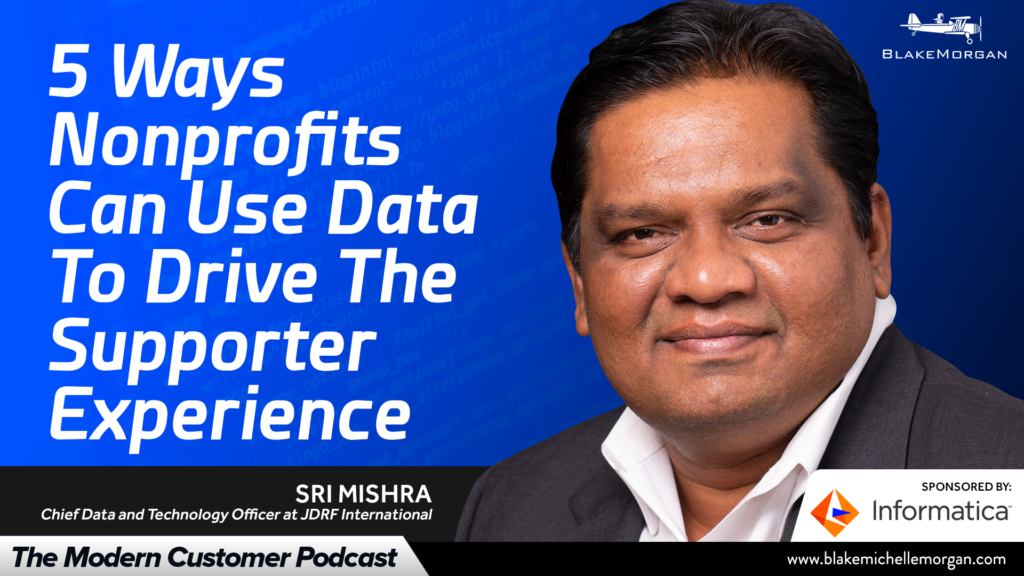A company striving to grow its revenue and an organization dedicated to finding a cure for type 1 diabetes may have different goals, but one important principle stays the same: they have to connect with their audience. Just like customer experience is crucial in the for-profit world, supporter experience drives the success of non-profit organizations.
In both industries, data plays a vital role. Sri Mishra, Chief Data and Technology Officer at JDRF International, knows that data holds the answers to staying relevant and connecting with supporters, no matter the type of the organization. Data is often overlooked in the nonprofit world, but it is a vital piece of an organization’s success.
Here are five ways nonprofits can use data to drive the supporter experience:
- Know supporters. For-profit customers are fairly easy to identify, but non-profit supporters tend to be more unique. Mishra says segmenting supporters is the biggest challenge organizations face, and trying to understand supporters manually can lead to data inaccuracies. Data helps organizations understand their many types of supporters and what matters to each group, as well as segment their approach for personalized experiences.
- See architecture holistically. Nonprofits need to believe in technology and invest in it. That means looking at the technology holistically and considering entire systems instead of just pieces. Holistic thinking allows organizations to connect pieces of data together for a full view of the organization, its supporters and its progress. When an organization sees things holistically, it can predict the future and plan for long-term success.
- Partner with tech teams. A digital transformation is an organization-wide endeavor. Business teams can’t do things on their own, and the technology team can’t create an effective data system without involvement from the business side. Data brings together the entire organization to unite every department to a common goal.
- Break down silos. Many non-profits run into pieces of data done manually in different parts of the organization, which creates inaccuracies and inefficiencies. Instead of the data working together to solve problems, it fights against itself and makes it difficult to understand what is really going on. Data allows organizations to automate their systems, which breaks down silos and unites the organization around a cohesive strategy with shared data. Without silos, the organization can run more efficiently and better serve its purpose.
- Create partnerships with tech companies. Most non-profit organizations don’t have technology resources to tackle data effectively on their own. Mishra says non-profit organizations have to partner with technology companies that understand the world of data and can apply their products to the organization. Strong partnerships help the non-profit adopt data systems more quickly and effectively.
Using data effectively can help non-profit organizations fulfill their purposes and meet their goals. To look towards the future and build lasting and effective relationships with supporters, nonprofits have to use data and find the partnerships that make it possible.
This post is sponsored by Informatica. About our sponsor:
Digital transformation changes customer expectations: better service, faster delivery, with less cost. Businesses must transform to stay relevant and data holds the answers. As the world’s leader in Enterprise Cloud Data Management, Informatica provides the foresight to become more agile, realize new growth opportunities and create new inventions. With 100% focus on everything data, we offer the versatility needed to succeed. Explore all that Informatica has to offer—and unleash the power of data to drive intelligent disruption. Please visit Informatica at www.informatica.com.
Blake Morgan is a keynote speaker and the author of the bestselling book The Customer Of The Future. Listen to her other podcast – The Be Your Own Boss Podcast – here.

